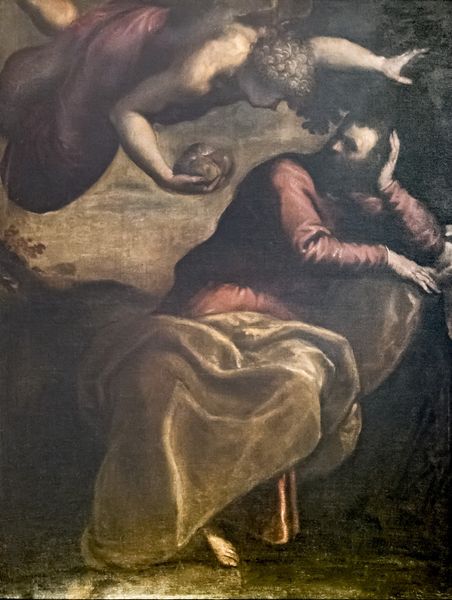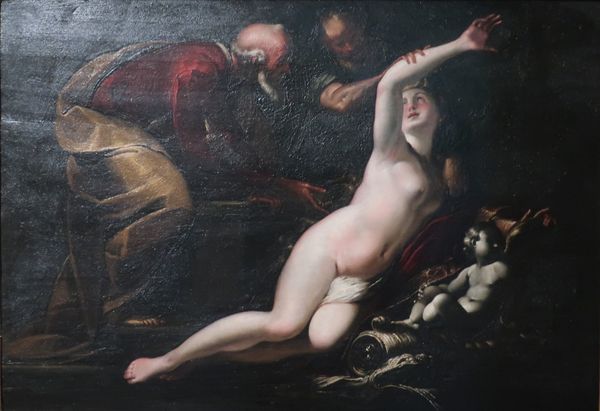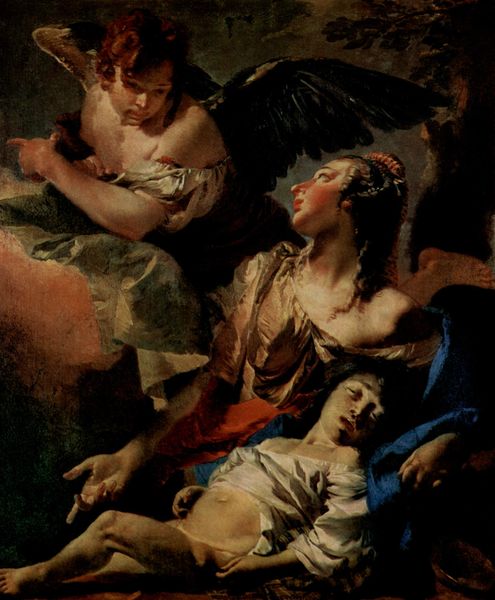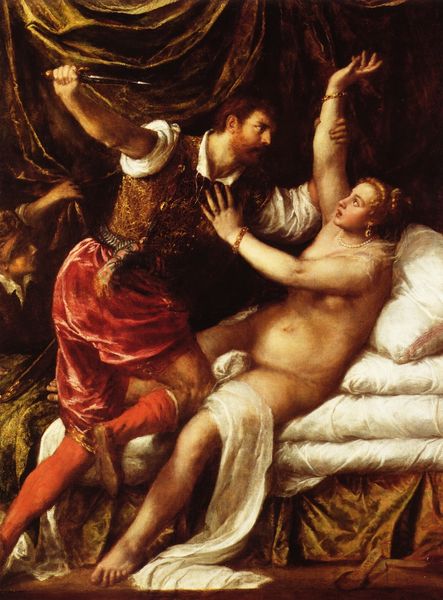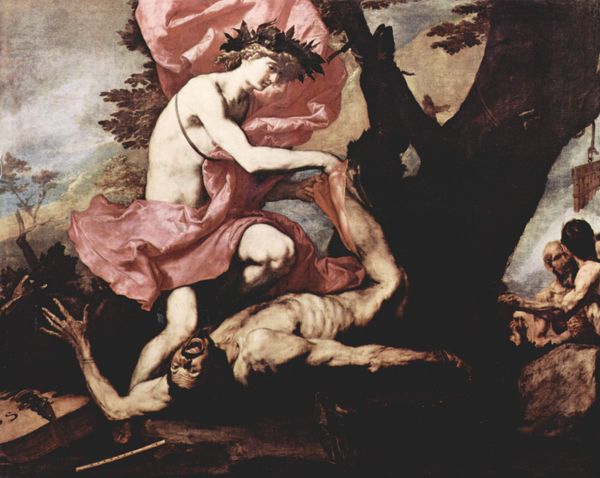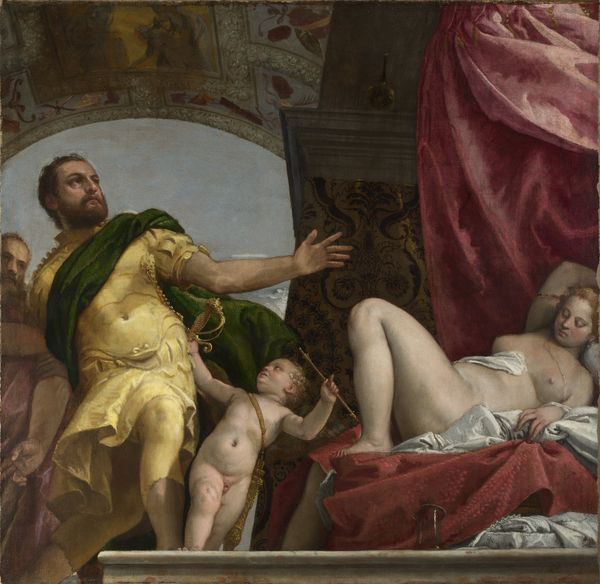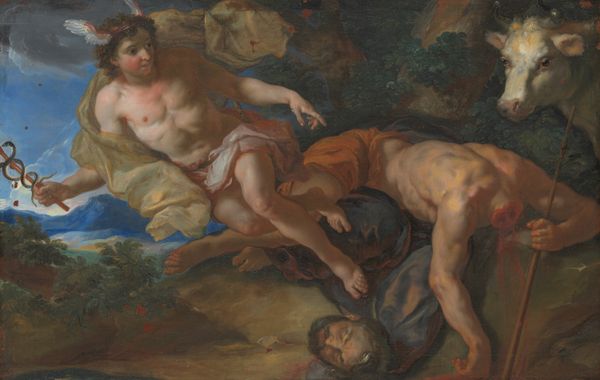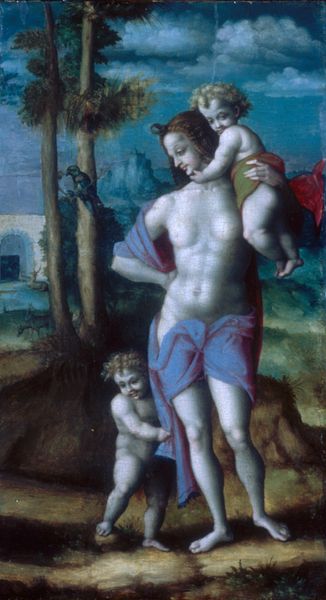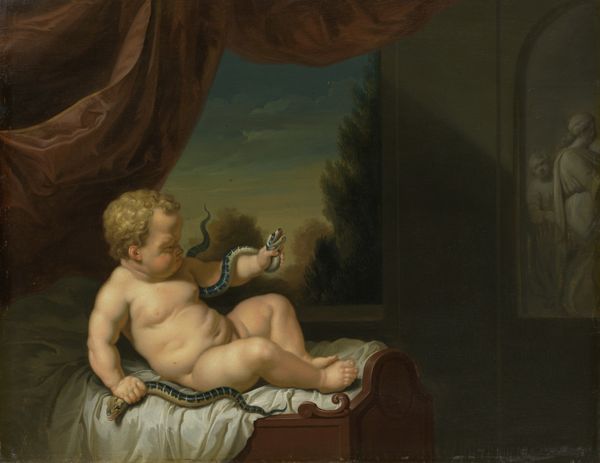
painting, oil-paint
#
narrative-art
#
painting
#
oil-paint
#
mannerism
#
figuration
#
oil painting
#
history-painting
Copyright: Public domain
Curator: Palma il Giovane’s “Christ Deposed in the Sepulchre," created around 1575 with oil paints, presents a powerful image of grief. The somber figures seem to emerge from the darkness itself. Editor: My first impression is of stark vulnerability. There’s a heavy emphasis on the body, almost sculptural, against what looks like a simple woven shroud. The stark lighting feels incredibly dramatic, almost theatrical. Curator: The artist's Mannerist style heightens this drama. Note how the elongated limbs and the almost strained expressions amplify the emotional weight of the deposition. Editor: Exactly. And that shroud – likely linen – speaks volumes. Its rough texture is such a contrast to the smoothness of Christ’s body. I wonder about the labor involved in producing it; how that community supported the body being displayed here. Curator: That texture is key. It grounds the scene. It reminds the viewer of the tactile world even as the figures themselves seem almost otherworldly. Consider, too, the symbol of the shroud. Editor: The cloth transforms the body in the image: from labor and care to one last piece of industrial activity, the material record in death, made through weaving. Is the artist saying it is an equivalent act of creation or destruction to display the body this way? Curator: Indeed, the visual language surrounding Christ is steeped in ritual. The shroud isn’t just cloth, it’s a symbol of transition, of preparing for burial and hinting at resurrection. But for believers during the Counter-Reformation period, there was another potential reading. As religious images came under fire, paintings like this offered a potent reminder of tangible divinity. Editor: And for me, understanding the materials--from the oil pigments themselves to the support beneath-- allows for greater respect, seeing it not only for how much someone gave, but the communities required to facilitate its meaning. The human labor and skill required feels reverential in and of itself. Curator: Seeing those intertwined values definitely enriched how I perceive the visual language here. Editor: Agreed. Thinking about labor makes a difference. This discussion of materiality and cultural meaning allows a kind of fuller awareness in the visual symbols it renders, I think.
Comments
No comments
Be the first to comment and join the conversation on the ultimate creative platform.
